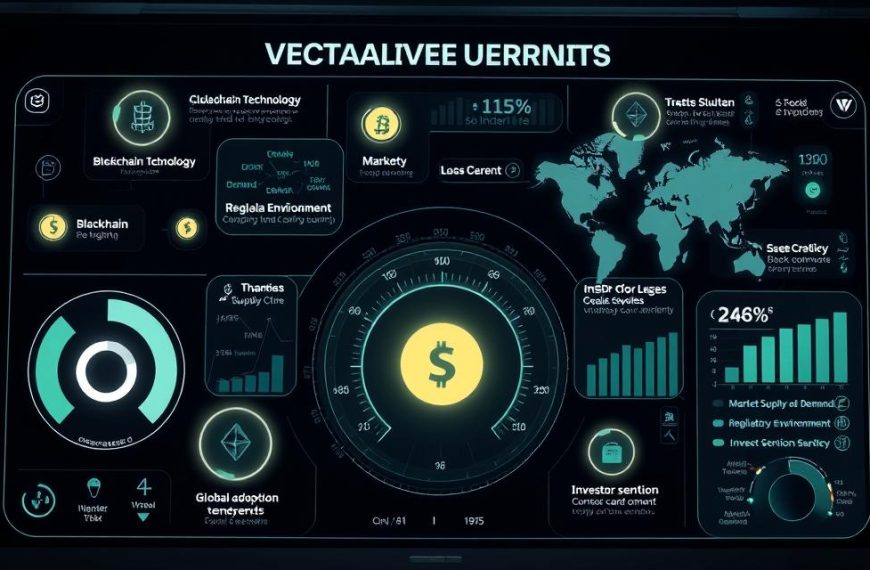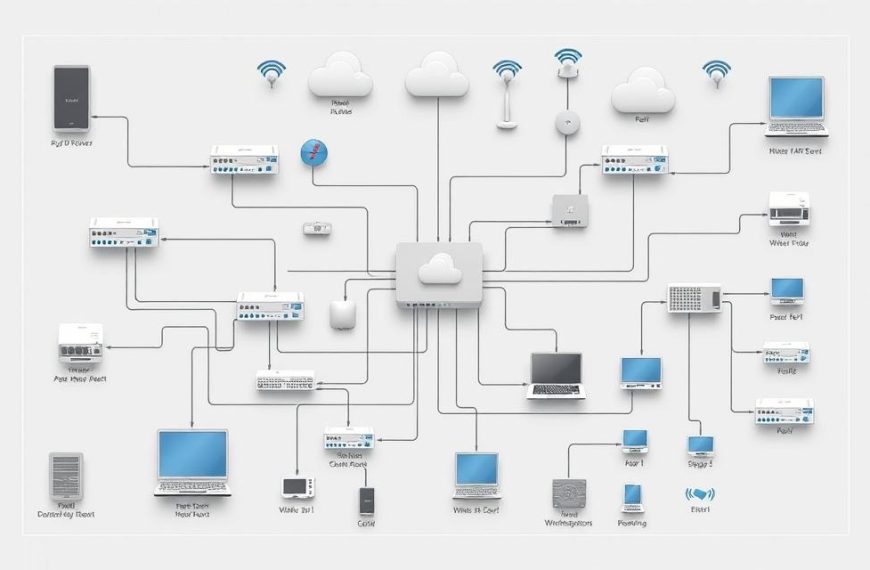In the rapidly evolving world of blockchain, many investors and developers often confuse tokens with cryptocurrencies. While both play crucial roles in the digital economy, they serve distinct purposes and operate differently within networks.
Understanding these terms is essential for making informed decisions. Cryptocurrencies like Bitcoin function as standalone digital currencies, while tokens, such as ERC-20, rely on existing blockchains for their creation and operation.
This distinction impacts their use cases, regulatory treatment, and overall value in the market. By exploring these differences, you can better navigate the crypto landscape and optimize your strategies.
Introduction to Tokens and Cryptocurrencies
The rise of blockchain technology has introduced a variety of digital assets, including tokens and cryptocurrencies. These assets play a pivotal role in the modern financial ecosystem, offering unique ways to store and exchange value.
Digital assets serve as an umbrella term, encompassing both cryptocurrencies and tokens. While all cryptocurrencies are digital assets, not all digital assets are cryptocurrencies. This distinction is crucial for understanding their roles and functionalities.
Cryptocurrencies like Bitcoin are native to their own blockchains. In contrast, tokens are built on existing chains, such as Ethereum, using smart contracts. This process, known as tokenization, allows for the creation of diverse assets tailored to specific use cases.
As of 2023, over 23,000 cryptocurrencies and tokens exist, reflecting the rapid growth of this space. Market capitalization ratios show that cryptocurrencies dominate at 73%, while tokens account for 27%. This highlights the evolving nature of the crypto landscape.
Regulatory bodies like the CFTC and SEC often distinguish between these assets based on their functionalities. Cryptocurrencies are typically viewed as currencies, while tokens may represent assets or utilities within a network.
| Feature | Native Coins | Protocol Tokens |
|---|---|---|
| Blockchain | Native | Built on existing chains |
| Examples | Bitcoin, Ethereum | ERC-20, BEP-20 |
| Primary Use | Currency | Asset or utility |
Understanding these terms is essential for navigating the crypto space. Whether you’re an investor or developer, recognizing the differences can help optimize strategies and ensure compliance with regulations.
What Are Cryptocurrencies?
Cryptocurrencies have revolutionized the way we think about money. These digital assets operate on decentralized networks, offering a secure and transparent medium for financial transactions. Unlike traditional currencies, they are not controlled by any central authority.
One of the primary functions of cryptocurrencies is to act as a store of value. Bitcoin, the first crypto, introduced this concept in 2009. Its fixed supply of 21 million coins ensures scarcity, enhancing its value over time.
Another key feature is their role as a medium of exchange. Ethereum, launched in 2015, expanded this functionality by introducing smart contracts. These programmable agreements automate transactions, making them faster and more efficient.
Examples of Popular Cryptocurrencies
The crypto market is dominated by several leading coins. Bitcoin (BTC) remains the most widely recognized, followed by Ethereum (ETH), Binance Coin (BNB), and others. Each of these coins serves unique purposes within their respective networks.
| Cryptocurrency | Launch Year | Key Feature |
|---|---|---|
| Bitcoin (BTC) | 2009 | First decentralized currency |
| Ethereum (ETH) | 2015 | Smart contract functionality |
| Binance Coin (BNB) | 2017 | Utility token for Binance ecosystem |
Transaction speeds vary significantly across cryptocurrencies. Bitcoin processes around 7 transactions per second (TPS), while Solana achieves up to 65,000 TPS. This difference highlights the evolving nature of crypto technology.
Proof-of-Work (PoW) and Proof-of-Stake (PoS) are two common consensus mechanisms. PoW, used by Bitcoin, requires computational power to validate transactions. PoS, adopted by Ethereum 2.0, relies on staking coins to secure the network.
Understanding these terms and features is essential for navigating the crypto space. Whether you’re an investor or developer, recognizing the differences can help optimize strategies and ensure compliance with regulations.
What Are Crypto Tokens?
Digital assets built on existing blockchains, crypto tokens have transformed how value is exchanged. Unlike native coins, tokens rely on platforms like the Ethereum blockchain for their creation and operation. They serve as programmable units of value, enabling diverse use cases across industries.
Tokens can represent physical or digital assets, access platform-specific services, or facilitate governance mechanisms. Their versatility has made them a cornerstone of decentralized ecosystems. For example, ERC-20 tokens power DeFi platforms, while ERC-721 tokens enable unique digital collectibles.
Types of Crypto Tokens
Tokens are categorized based on their functionalities. Utility tokens provide access to specific services, while security tokens represent ownership in an asset. Governance tokens allow users to vote on protocol upgrades, and non-fungible tokens (NFTs) represent unique digital items.
Token standards like ERC-20, ERC-721, and BEP-20 define their technical specifications. These standards ensure compatibility and interoperability across platforms. For instance, the Ethereum blockchain hosts over 500,000 ERC-20 tokens, reflecting their widespread adoption.
| Token Type | Functionality | Examples |
|---|---|---|
| Utility | Access to services | Chainlink (LINK) |
| Security | Asset ownership | Polymath (POLY) |
| Governance | Voting rights | Uniswap (UNI) |
| NFT | Unique digital items | CryptoPunks |
Token creation involves deploying smart contracts on platforms like Ethereum. These contracts define the token’s supply, distribution, and functionality. Fixed supply models ensure scarcity, while inflationary models support ongoing incentives.
Use cases for tokens are vast. Uniswap leverages UNI tokens for governance, while Chainlink uses LINK to power its oracle network. Fractional ownership through asset-backed tokens is also gaining traction, enabling broader access to high-value assets.
For example, Axie Infinity uses AXS tokens to govern its play-to-earn ecosystem. This demonstrates how tokens can drive community engagement and decentralized decision-making. To learn more about crypto tokens, explore their diverse applications and standards.
Key Differences Between Tokens and Cryptocurrencies
Navigating the digital asset landscape requires clarity on how tokens and cryptocurrencies function. While both operate within blockchain ecosystems, their technical foundations and use cases diverge significantly. Understanding these distinctions is vital for investors and developers alike.
Blockchain Dependency
Cryptocurrencies are native to their own blockchains, such as Bitcoin and Ethereum. These coins function independently, relying on their network for security and validation. In contrast, tokens are built on existing chains, with 89% of them utilizing the Ethereum platform.
This dependency affects transaction costs. Tokens often incur higher gas fees due to their reliance on the underlying blockchain. Cryptocurrencies, being native, typically have lower fees and faster processing times.
Purpose and Use Cases
Cryptocurrencies primarily serve as a store of value and medium of exchange. Bitcoin, for example, is widely recognized for its scarcity and security. Tokens, however, are more versatile, enabling functionalities like governance, asset representation, and access to decentralized services.
For instance, ERC-20 tokens power DeFi platforms, while ERC-721 tokens enable unique digital collectibles. This flexibility makes tokens indispensable in decentralized ecosystems.
| Feature | Cryptocurrencies | Tokens |
|---|---|---|
| Blockchain | Native | Built on existing chains |
| Primary Use | Currency | Asset or utility |
| Transaction Fees | Lower | Higher |
Security models also differ. Cryptocurrencies like Bitcoin rely on robust hash rates, while tokens depend on smart contract audits. These distinctions highlight the unique strengths and challenges of each asset type.
Regulatory implications vary as well. Cryptocurrencies are often treated as currencies, while tokens may fall under asset or utility classifications. This impacts their legal frameworks and market adoption.
Liquidity across exchanges is another factor. Cryptocurrencies generally have higher liquidity due to their widespread recognition. Tokens, especially newer ones, may face liquidity challenges until they gain traction.
By understanding these terms and their practical applications, you can make informed decisions in the evolving digital asset space.
How Tokens and Cryptocurrencies Are Created
The creation of digital assets involves distinct processes for tokens and cryptocurrencies. Each method reflects their unique roles in the blockchain ecosystem. Understanding these processes is essential for developers and investors alike.
Initial Coin Offerings (ICOs)
ICOs emerged as a popular fundraising method for blockchain projects. In 2018, the ICO market peaked at $6.2 billion, showcasing its potential. However, regulatory scrutiny has increased, with the SEC charging over 30 ICOs since 2017.
ICOs allow startups to raise money by issuing new crypto tokens. Investors purchase these tokens in exchange for established coins like Bitcoin or Ethereum. This method has funded groundbreaking projects, including Ethereum’s $18 million raise in 2014.
Token Minting Process
Tokens are created using smart contracts on platforms like Ethereum. OpenZeppelin libraries simplify this process, ensuring security and efficiency. Token standards like ERC-20 define their functionality, enabling seamless transactions across platforms.
Distribution models vary, with public sales, team allocations, and reserves being common. Proper token distribution ensures fairness and long-term viability. Security audits are crucial, as vulnerabilities in smart contracts can lead to significant losses.
Fundraising Methods Compared
ICOs, IDOs, and IEOs offer different approaches to fundraising. ICOs are decentralized but face regulatory challenges. IDOs and IEOs provide additional security by involving launchpads or exchanges. Each method has its pros and cons, depending on the project’s goals.
| Method | Key Feature | Example |
|---|---|---|
| ICO | Decentralized | Ethereum |
| IDO | Launchpad Support | Polkastarter |
| IEO | Exchange-Backed | Binance Launchpad |
Regulatory compliance is critical in token launches. The Howey Test determines whether a token qualifies as a security. Projects must navigate these regulations to avoid legal issues and build trust with investors.
By understanding these creation processes, you can make informed decisions in the dynamic world of digital assets. Whether you’re launching a project or investing, clarity on these terms is essential for success.
Use Cases for Tokens and Cryptocurrencies
Tokens and cryptocurrencies are reshaping industries with their unique applications. From decentralized finance to everyday transactions, these digital assets are transforming how we interact with money and services.
Tokens in Decentralized Finance (DeFi)
Decentralized finance relies heavily on tokens used for various purposes. Automated Market Maker (AMM) protocols, for example, utilize liquidity provider tokens to facilitate trading. These tokens enable users to earn rewards while contributing to the platform’s liquidity.
Stablecoins, a type of token, are gaining traction in cross-border payments. Their stability makes them ideal for international transactions, reducing fees and processing times. DeFi’s Total Value Locked (TVL) has reached $180 billion, showcasing the growing adoption of these services.
Cryptocurrencies in Everyday Transactions
Cryptocurrencies like Bitcoin are increasingly accepted as a currency for everyday purchases. Over 15,000 merchants globally now accept Bitcoin, making it a viable option for consumers. Litecoin and Dogecoin are also gaining popularity due to their faster transaction speeds.
Cryptocurrency ATMs have surged to over 38,000 worldwide, providing easy access to digital assets. El Salvador’s adoption of Bitcoin as legal tender highlights its potential to function as a store value and medium of exchange in national economies.
| Asset Type | Primary Use | Example |
|---|---|---|
| Tokens | DeFi Services | Uniswap (UNI) |
| Cryptocurrencies | Everyday Transactions | Bitcoin (BTC) |
Real-world applications of tokens include Filecoin for decentralized storage and BAT for rewarding content creators. These cases demonstrate the versatility of tokens in solving real-world problems.
As the crypto space evolves, the tokenization of traditional financial instruments is expected to grow. This trend will further bridge the gap between digital and traditional finance, creating new opportunities for investors and users alike.
Risks and Challenges in the Crypto Space
The crypto space, while innovative, comes with significant risks and challenges. Investors and developers must navigate regulatory uncertainties, market volatility, and security vulnerabilities to succeed. Understanding these factors is crucial for making informed decisions.
Regulatory Concerns
Regulatory crackdowns have intensified in recent years. The SEC’s ongoing case against Ripple, initiated in 2020, highlights the legal complexities surrounding digital assets. Staking services have also faced scrutiny, with platforms like Kraken settling with regulators for $30 million in 2023.
Jurisdictional approaches vary widely. The US emphasizes strict compliance, while the EU focuses on harmonized frameworks. Singapore, on the other hand, adopts a more progressive stance, fostering innovation while ensuring consumer protection.
Market Volatility
The 2022 crypto winter erased $2 trillion in market value, underscoring the sector’s volatility. Bitcoin’s 30-day average volatility stands at 4.2%, compared to the S&P 500’s 0.9%. This unpredictability poses challenges for long-term investment strategies.
Smart contract vulnerabilities further exacerbate risks. Over $3 billion was lost to exploits in 2022, highlighting the need for rigorous audits. Ponzi schemes also remain prevalent, with red flags including unrealistic returns and lack of transparency.
| Metric | Bitcoin | S&P 500 |
|---|---|---|
| 30-Day Volatility | 4.2% | 0.9% |
| Market Impact | High | Low |
Environmental debates around Proof-of-Work (PoW) coins like Bitcoin continue. Critics argue their energy consumption is unsustainable, while proponents highlight ongoing efforts to adopt renewable energy sources.
Insurance options for crypto holdings are emerging but remain limited. Coverage typically includes theft and hacking, but exclusions for smart contract exploits are common. As the industry matures, more comprehensive solutions are expected.
By staying informed about these risks, investors and developers can better navigate the crypto landscape. Awareness of regulatory trends and market dynamics is essential for safeguarding assets and optimizing strategies.
Future Trends in Tokens and Cryptocurrencies
The future of digital assets is being shaped by groundbreaking innovations in blockchain technology. From tokenizing real-world assets to achieving mainstream adoption, the crypto space is evolving rapidly. These trends are unlocking new opportunities for investors, developers, and businesses alike.
Tokenization of Assets
Tokenization is revolutionizing how we perceive ownership and investment. By converting physical and digital assets into tokens, blockchain enables fractional ownership and enhanced liquidity. For example, the real estate tokenization market is projected to reach $1.4 trillion by 2030.
Real World Assets (RWAs) are at the forefront of this trend. Pipelines for tokenizing RWAs are being developed by top platforms, enabling seamless integration with decentralized finance (DeFi). Institutional custody solutions from Fidelity and Coinbase are further driving adoption, ensuring secure storage for these digitalized assets.
Mainstream Adoption of Cryptocurrencies
Cryptocurrencies are inching closer to mainstream acceptance. BlackRock’s pending Bitcoin ETF application signals growing institutional interest. If approved, it could pave the way for broader adoption among traditional investors.
Central Bank Digital Currencies (CBDCs) are also gaining traction. G20 nations are actively developing CBDCs to modernize financial systems. These initiatives highlight the increasing use of crypto technologies in global economies.
| Trend | Impact |
|---|---|
| Asset Tokenization | Enhanced liquidity and fractional ownership |
| Mainstream Adoption | Increased institutional and retail participation |
Other emerging trends include multi-chain interoperability solutions and AI-blockchain convergence. These innovations are expanding the applications of tokens and crypto, creating a more interconnected and efficient ecosystem.
Conclusion
Understanding the distinctions between digital assets is crucial for navigating the blockchain ecosystem. This article has explored how tokens and cryptocurrency serve unique roles, from decentralized transactions to asset representation. Each offers distinct value and risk-reward profiles, making them suitable for different investment strategies.
When deciding between these assets, consider their use cases. Cryptocurrencies excel as stores of value and mediums of exchange, while tokens provide access to decentralized services and governance. Emerging opportunities like cross-chain bridges are expanding their utility, but regulatory uncertainties, especially around staking, remain a challenge.
For those entering the crypto space, tools like Etherscan and BscScan can verify transactions and ensure transparency. Portfolio allocation strategies should balance risk and potential returns. To deepen your understanding, explore resources like the eToro Academy for comprehensive information on blockchain technology.












